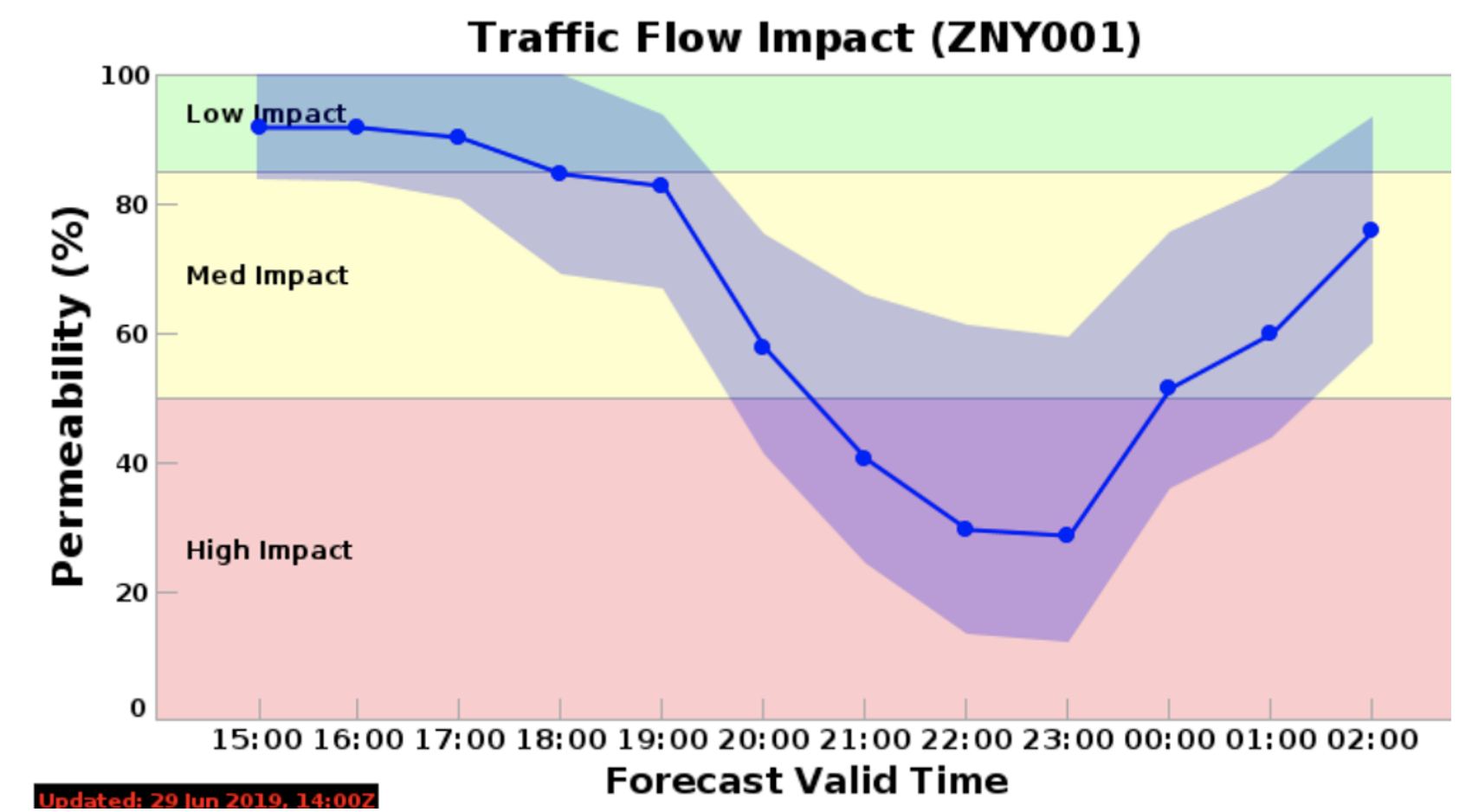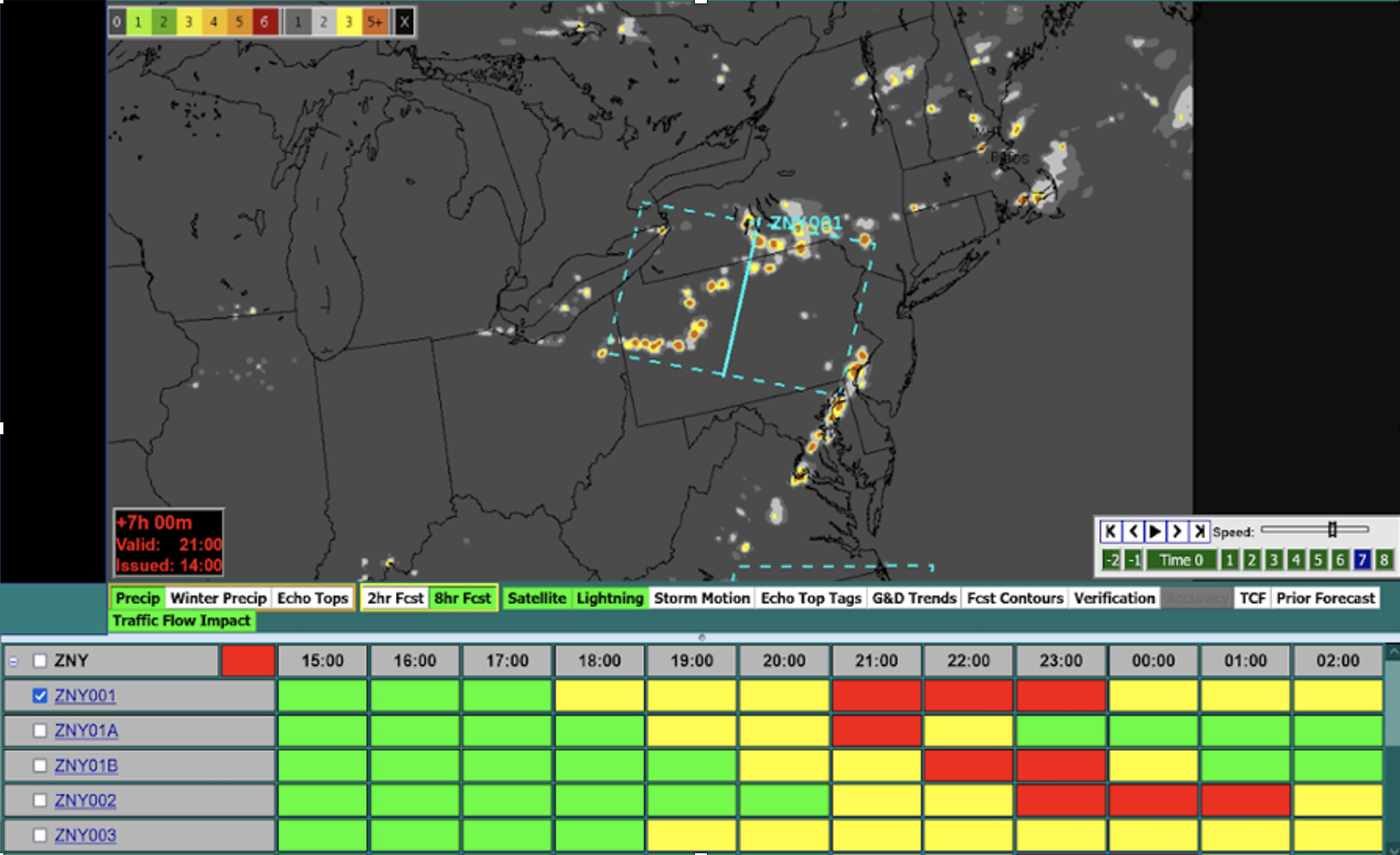
Award-winning technology helps manage flight delays through severe weather
Every day, thousands of flights rely on air traffic controllers (ATCs) to make decisions that keep pilots and passengers safe in the skies and keep flights on schedule. A major challenge for ATCs is planning and adapting to weather, which can greatly impact the number of flights that can fly through an airspace and arrive or depart from an airport. In 2019, weather was the cause of more than 60% of all flight delays in the United States, according to the Bureau of Transportation Statistics.
Historically, ATCs have relied on past experience and looked at weather forecasts themselves to understand and prepare in advance for weather that could impact the flow of traffic. A Laboratory-developed technology called the Traffic Flow Impact (TFI) tool aims to help ATCs make detailed plans in advance by using machine learning. The tool, which began development in 2013 and won an R&D 100 Award, utilizes multiple weather forecast models from the National Oceanic and Atmospheric Administration. Some of these models extrapolate the forecast from current radar, some provide radar-like depictions of the forecasts from atmospheric models, and some focus on the probability of severe weather in a region.

By using machine learning to analyze all of these different forecast models and consider historical data of how traffic has been interrupted by weather, the tool can provide a breakdown of how ATCs may want to adjust the flow of traffic.
"TFI focuses on translating the weather forecasts into measures that provide explicit predictions of traffic flow rates and the uncertainty of those rates. ATCs can then implement changes to reroute aircraft strategically or delay flights on the ground before departure to save on the costs associated with holding aircraft in flight," says Michael Matthews, a researcher in the Air Traffic Control Systems Group. "The tool also provides valuable information on the uncertainty in the forecasts for planning of risk reduction."

Delaying flights can cause a ripple effect, which is why it is important to carefully adjust the flow of traffic during weather to match the traffic demand with the reduced airspace capacity. Keeping aircraft moving safely and efficiently ultimately saves aircraft operators and passengers time and money.
The tool was selected by R&D World magazine for a 2021 R&D 100 Award. The awards recognize "new commercial products, technologies, and materials for their technological significance that are available for sale or license."
"This is really one part of a bigger effort in our group to improve air traffic control safety and efficiency. It is an incredible feeling to provide cutting-edge research in air traffic,” says Matthews. "I feel extremely lucky to have been a part of this team for the past 30 years."
Inquiries: contact Kylie Foy.